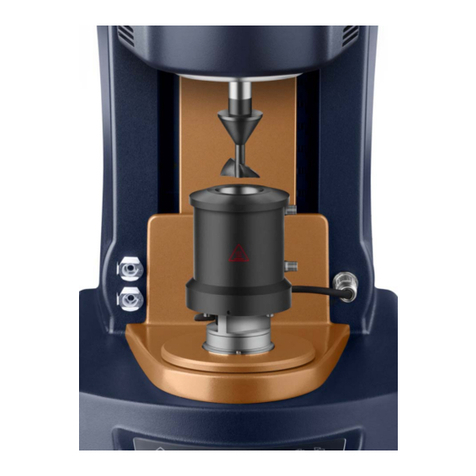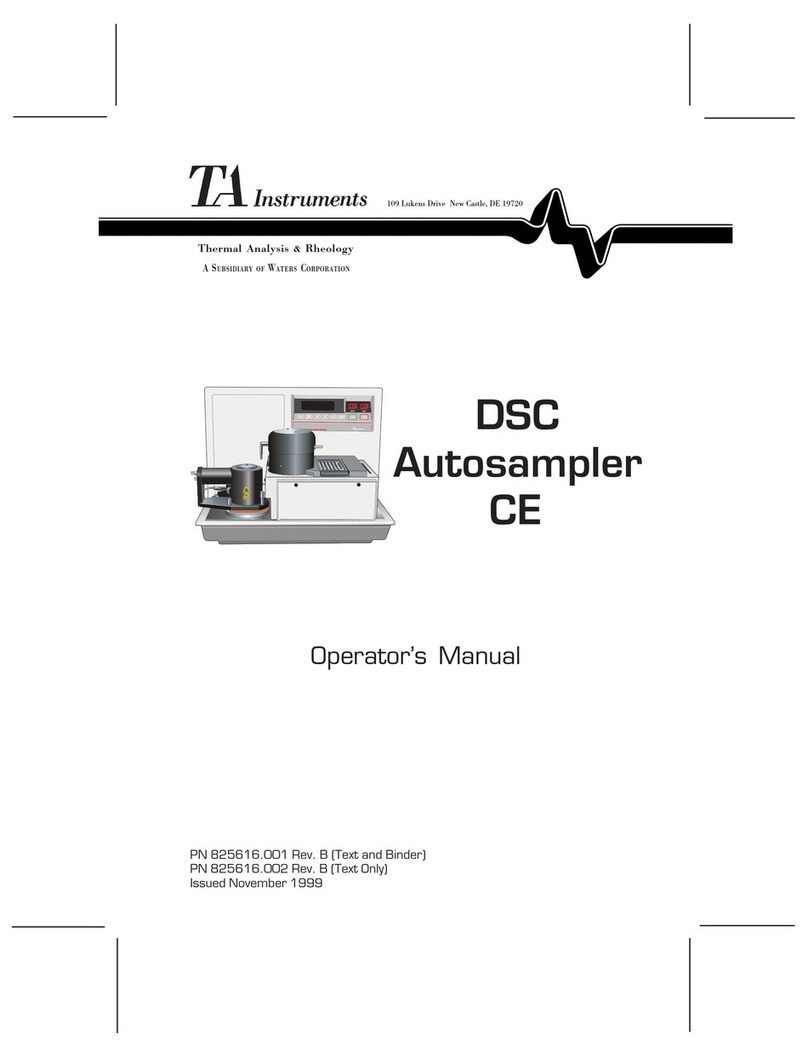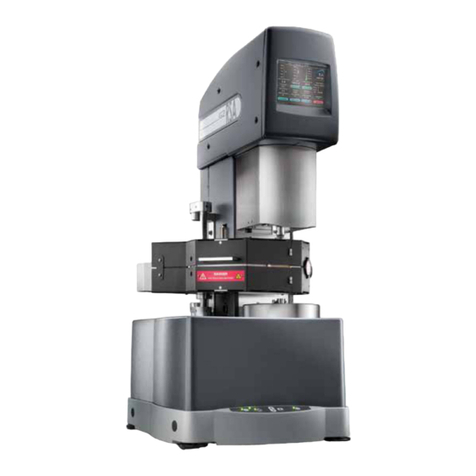
DXF Getting Started Guide Page 10
Table of Contents
Introduction................................................................................................................................................. 3
Important: TA Instruments Manual Supplement ................................................................................... 3
Notes, Cautions, and Warnings .............................................................................................................. 4
Regulatory Compliance .......................................................................................................................... 4
Safety Standards .............................................................................................................................. 4
Electromagnetic Compatibility Standards ....................................................................................... 5
Supplier’s Declaration of Conformity .................................................................................................... 6
Safety ...................................................................................................................................................... 6
Instrument Symbols ......................................................................................................................... 6
Warnings .......................................................................................................................................... 7
Electrical Safety ............................................................................................................................... 7
Liquid Nitrogen Safety .................................................................................................................... 7
Thermal Safety ................................................................................................................................ 8
Chemical Safety ............................................................................................................................... 8
Lifting the Instrument ...................................................................................................................... 9
Table of Contents...................................................................................................................................... 10
Chapter 1: Introducing the Discovery Xenon Flash.............................................................................. 12
Overview ..................................................................................................................................................... 12
DXF System Components .......................................................................................................................... 13
Pulse Source Module ............................................................................................................................ 13
Environmental Modules and Detector Assembly ................................................................................ 16
Instrument Specifications ........................................................................................................................... 17
Chapter 2: Installing the DXF System.................................................................................................... 18
Unpacking/Repacking ................................................................................................................................. 18
Installing the System ................................................................................................................................... 18
Inspecting the System .......................................................................................................................... 18
Choosing a Location ............................................................................................................................ 19
In .................................................................................................................................................... 19
On .................................................................................................................................................. 19
Near ............................................................................................................................................... 19
Away from ..................................................................................................................................... 19
Moving the Instrument ......................................................................................................................... 20
Connecting the Environmental Module to the Pulse Source Module .................................................. 22
DXF Back Panel ............................................................................................................................ 23
Connecting the Environmental Module to the Pulse Source ......................................................... 26
Connecting the Detector Cable to the Detector Head Assembly ................................................... 27
Setting Up System Communication with the Controller (Computer) .................................................. 27
Connecting the Utilities ........................................................................................................................ 28
Connecting the Power .................................................................................................................... 28
Setting Up the Vacuum System ..................................................................................................... 28
Connecting Cryogenic Cooling and Purge Gas Lines ................................................................... 29
Installing the Tray ................................................................................................................................ 29
Calibrating the Tray Position ............................................................................................................... 31
Verifying the Tray Position Calibration ........................................................................................ 32
Installing the Pins ................................................................................................................................. 33































